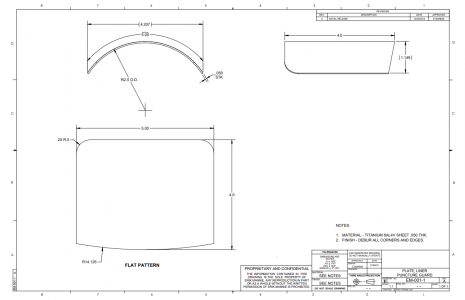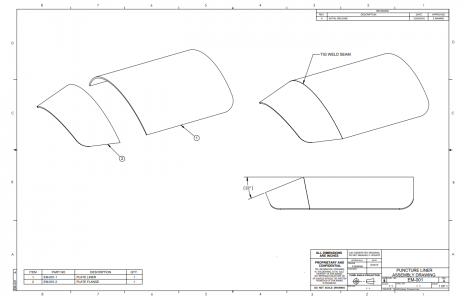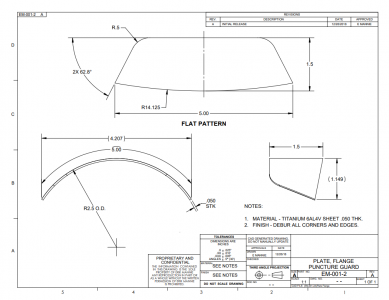- Joined
- Sep 8, 2019
- Messages
- 4,392
I am 53 years old and all I like to do is go to school and work in my shop. I have a good union job (I work for UPS at the Oakland Airport) that will allow me to pay my bills, go to school and work in my shop for the rest of my life.erikmannie, If you are at all serious about what you want to do, let's analyze the process.
1. The tools and equipment that you have may already be sufficient to make a prototype. Think Wilbur & Orville in a bicycle shop. Your "inferior" tools are light years ahead of what was available at the time.
2. Make a good CAD drawing.
3. Hire a lawyer. You need to check for existing patents and also what DOT requires to be allowed on the road.
4. Get an engineer to certify your material properties. Flexibility being very important. Tires are only round off the vehicle. He should also be able to advise thickness and maching tolorences.
5. You can start machining the prototype. You will need to work within the limitations of your machine. To prove the feasibility of the idea, machining to a thousand or 1/2 thousand may be fine. Other option is to find a company that has the capability to make the prototype for you. The next option is to spend some really serious money to get machines with the tolerances you want. At the least you will need a good surface plate and dial indicators to check the machined item. Or one of them fancy digital touch probe measuring machines.
6. Find a really, really rich investor or business to partner with. A business
7. Home-brew test the tire to see if it works at all. Riding down the street isn't a good idea. If the prototype fails you may need an engineer to determine why and suggest alternatives. If the tire lives, make a couple for destructive testing.
8. Have a lab test and certify the results. DOT may require this.
9. Get a ton of insurance and farm out the manufacturing to a reputable company or buy the equipment and start your own. Better still, partner with a company and just get a royalty.
Can you do? Absolutely! A lot of work and headache. The reward is that you may become a millionaire if your idea takes off. Who knows,we might be bloging with the next Elon Musk! However, if the machines you have can't handle the material you specified down to say, one hundred thousands of an inch, then buying all the micrometers and gauge blocks to measure one ten thousands won't really get you any where. You might really need one ten thousand accuracy for public use, but I would end up there, not start there.
Good Luck and keep us posted! Charles
I have never had any interest in sales, marketing or becoming wealthy. If I were wealthy, I would still work at the same job, go to school and work in my shop.
My tire armor idea is very much open source. I hope that somebody does bring it to market, but it won't be me because that could take me away from my classes or shop.
My prototype steel plates do the job for my purposes; I only need to find a more elegant way than duct tape to attach the plates to (the inside of) the tires. The plates move independently in all axes. I don't mind fabricating the plates (in fact I enjoy it), but mass production of the plates would call for a streamlining of the production process.
I will start a thread on this when I have time; until I do, here are some important considerations:
(1) Great fitup makes the welding go a lot faster and easier,
(2) .050" Grade 5 Ti in precut 5" X 5" squares is not expensive because you can buy second hand drops. The ERTi-5 is expensive, and of course a lot of Argon is used.
(3) I use a hydraulic press to bend the material,
(4) I have only tested these at 19-20 psi tire pressure, and
(5) There are many simple ways (e.g. powder coating) to protect the material from cutting the tube (if using a tube) or tire.
Here are the CAD drawings for a single plate for a 26" X 5.05" tire. If anybody is interested, you may adopt the idea as your own.



Last edited:

